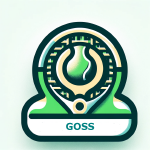Lessons from the Ashes for Badge Team Selection
Lessons from the Ashes for Badge Team Selection
In the aftermath of the 2025–26 Ashes, one truth emerged more clearly than any statistical standout: while stars like Starc, Head, and Carey made vital contributions, Australia’s 4–1 series win wasn’t driven by brilliance alone. It was the result of a team effort — where depth, cohesion, and clutch performances from less-heralded players made all the difference.
For Badge selectors, the lesson is timely and urgent.
The Flawed Fantasy XI
Attempting to assemble a “Best XI” from the series quickly unravels after six players. Why? Because cricket — like competitive Badge tennis — is not won by stars alone. It’s decided in high-leverage moments by dependable, adaptable, team-oriented players.
Australia succeeded not by dominating every session, but by consistently edging the 51–49 battles. These mini-contests, full of subtle momentum swings, are precisely where Badge ties are decided.
Avoiding Stokes “Three-Out-of-Ten” Trap
England fielded players who could dazzle briefly but struggled to sustain impact. Ben Stokes called it “three out of ten” cricket: risky, streaky, and ultimately unreliable.
The parallel in Badge? Selecting players capable of the occasional highlight-reel moment but lacking consistency in execution — especially in doubles, where chemistry, positioning and volleys matter far more than raw baseline power. Or persisting with aging big names whose recent form hasn’t been tested under any meaningful, competitive pressure.
Success in Badge isn’t about flash — it’s about function. The teams that win are built on steady, team-first performers who show up every round and make those around them better.
When Players Near the End of Their Cycle
One of the most delicate and demanding responsibilities for any selection panel is navigating periods of transition — especially when long-serving, respected players begin to show signs of decline. Last season’s Badge results strongly suggest that several key players, particularly in the higher divisions, are nearing the end of their competitive window.
It’s a sensitive space. Pride and identity are often closely tied to team roles, and it’s entirely human for players to want to hold on — even when performance no longer matches past standards.
Complicating matters further is the potential conflict of interest that arises when selectors also put themselves forward as team captains. Without proper checks and transparency, this dual role risks eroding trust in the integrity of the selection process.
Yet this moment should be viewed not as a problem, but as a strategic opportunity.
To build stronger, more competitive teams for the future, selectors must be willing to prioritise potential over short-term form. The aim is not just to field the best team now, but to invest in players who can grow, evolve, and peak in seasons to come. Doing so requires courage, honest appraisal, and a commitment to development over familiarity.
It was disappointing that the committee chose not to engage with the findings of the recent Badge White Paper at the AGM — a document shaped by thoughtful, good-faith contributions from many members. Equally concerning was the decision not to release the results of the hastily issued Badge experience survey, which came across as more reactive than genuinely responsive.
Whether this silence was due to discomfort with the feedback or a growing disconnect between the committee and the members, it sent an unfortunate message.
Strong teams are forged through honest reflection. Strong clubs are built on open, respectful dialogue. Ignoring constructive input not only erodes trust — it also forfeits a vital opportunity to strengthen our tennis community and align our path forward with reality.
Wrap
The Ashes reminded us that stars don’t win series — teams do. It’s a lesson Badge selectors must take seriously. The time for bold, future-focused decisions is now.
Because if we’re not building stronger teams, our club is falling behind.






